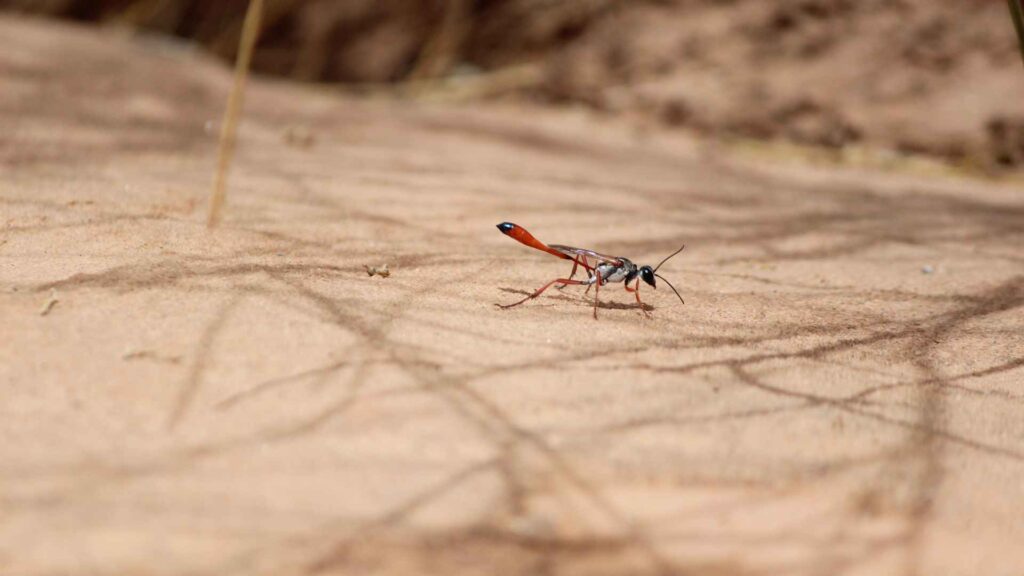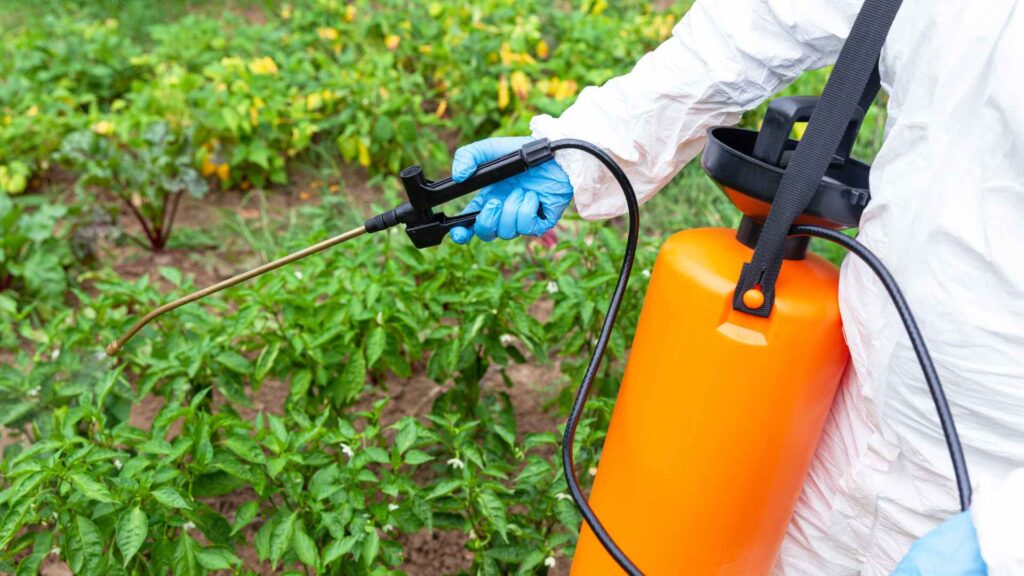Table Of Content
ToggleAs a pest control expert, I frequently encounter people struggling about how to get rid of sand wasps.
These solitary wasps, while beneficial predators, can become unwelcome guests around homes and gardens.
This guide equips you with the knowledge and strategies to effectively manage sand wasp populations and keep your property sting-free.
Sand wasps, also known as digger wasps, are slender insects with elongated bodies and thread-thin waists. Unlike their social wasp cousins (yellow jackets and hornets), sand wasps are solitary and don’t aggressively defend their nests.
Look for these signs:
Sand wasps prefer loose, sandy soil for their nesting sites. They create small burrows with a single entrance hole, often located near patios, walkways, or around the base of structures.
Signs of a sand wasp infestation include:

While sand wasps are generally solitary and don’t aggressively seek conflict, they will sting if they feel threatened or their nest is disturbed. Their sting, similar to a bee sting, delivers a sharp pain and localized swelling that typically subsides within a few hours.
Beyond the potential health risks, sand wasp infestations can also cause property damage and economic disruptions:
Discover safe wasp control solutions for your home.

For small sand wasp infestations, consider these eco-friendly removal methods that avoid the use of harsh chemicals. Remember, safety always comes first! Make sure to wear long sleeves, pants, gloves, and safety glasses whenever attempting sand wasp removal.
Important Considerations:
While these non-chemical methods can be effective for small infestations, they may not always be suitable for large sand wasp populations or for people uncomfortable getting close to wasp nests. In such cases, seeking professional help from a licensed pest control expert is recommended.
Learn more about our eco-friendly wasp removal methods.

Insecticides can be a helpful tool for eliminating severe sand wasp problems, but use them with caution:
Important Note: Always check product availability and regulations in your area before purchasing any insecticide.
Remember: Chemical control should only be used as a last resort after exploring and exhausting safer methods. If you’re uncomfortable handling insecticides or have a large infestation, it’s best to call a professional pest control company for effective and safe sand wasp removal.
Schedule a wasp inspection with our experts today.
The old adage “prevention is better than cure” rings especially true when it comes to sand wasps. By taking proactive steps to keep them away from your house, you can save yourself the hassle (and potential sting) of dealing with an established infestation. Here’s a comprehensive approach to preventing sand wasp problems:
By implementing these preventative measures, you can significantly reduce the risk of sand wasps establishing nests on your property.
Get a free quote for professional wasp nest removal.

As a pest control expert, I recommend a multi-pronged approach to sand wasp control. By combining prevention methods, natural repellents, and targeted removal techniques, you can create a sand wasp-free environment and enjoy your outdoor space sting-free.
Remember, ongoing monitoring and vigilance are key to keeping these solitary wasps at bay. If you’re facing a large infestation, don’t hesitate to seek professional help for a complete and lasting solution.
To keep wasps away from your house, consider planting herbs like mint, thyme, and citronella, which repel them with their strong scents. Additionally, sealing any cracks or crevices in your home’s exterior, avoiding leaving food or sweet drinks outside, and using decoy nests can deter wasps from nesting near your house.
Wasps are repelled by strong scents such as peppermint, citronella, eucalyptus, and clove oil. Mixing these essential oils with water and spraying the solution around your home’s entry points can help deter wasps from entering.
You can spray a mixture of water and essential oils like peppermint, citronella, or eucalyptus around your house to repel wasps. Alternatively, commercial insecticides labeled for wasp control can be used around outdoor areas where wasps are active.
To quickly get rid of wasps in your house, use a commercial wasp spray designed for indoor use. Spray directly on the wasps or their nests if you can locate them. Seal any entry points they may be using to prevent further infestations, and consider contacting a pest control professional for help if the problem persists.
References:
https://www.familyhandyman.com/list/best-caulk-for-kitchens-baths-gutters-and-more/#:~:text=Alex White Acrylic Latex Painter’s Caulk,-Shop Now&text=For just a couple of,a 25-year durability rating.
https://wasps.ucr.edu/wasp-identification#:~:text=There are several species of,consobrina).
Your trusted pest control experts in Southern California. Keeping your neighborhood pest-free!